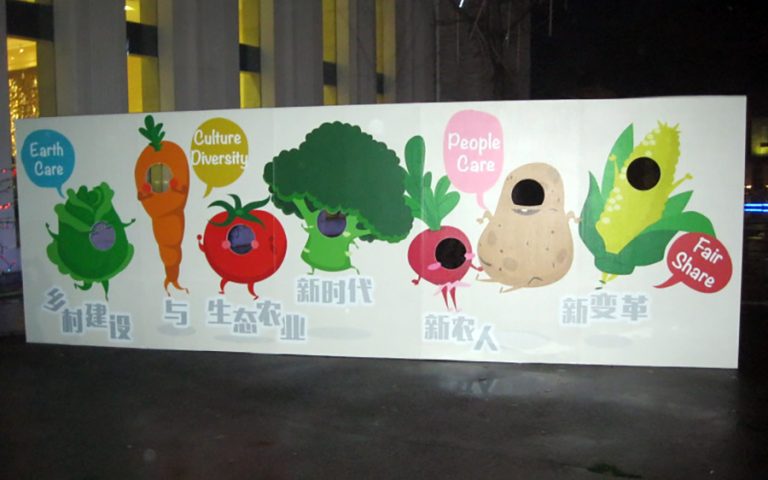By Elizabeth Henderson
Part 1
One of the first books I read after making the decision to move to a farm in Gill, MA was Farmers of Forty Centuries by F.H. King, a US agronomist who toured farms in China, Korea and Japan in 1909. I was impressed and inspired by King’s descriptions of the intensive, highly integrated farms where every scrap of nutrient, including humanure, was carefully recycled, and hoped one day to see for myself. The Urgenci International CSA Conference in Beijing, Nov. 18 – 22, 2015, was my big chance.
One of my secrets it that I am the “honorary president” of Urgenci. This way I evade regular board responsibilities and get to do only the jobs I like best – helping design the conference program and occasionally giving a speech. With board approval, I designed as many US CSA farmers and organizers as I could into the program. The conference covered all of our travel expenses. We made Rural Reconstruction the overall theme of the conference, and took the headings for the UK CSA charter as the titles for the three days – Earth Care, People Care, Fair Share, with Cultural Diversity as a crosscutting theme.
November 15 Many Hours of Travel
I left home at 6:30 am for 8 am flight to Chicago, happily traveling with Erin Bullock, an organic farmer half my age. We had a 5 ½ hour layover. – Fortunately, we found the yoga room, and then met up with Qiana Mickie of Just Food and Scott Chaskey of Quail Hill Farm. Cheryl Rogowski never showed up and never let any of us know what happened.
The flight from Chicago to Beijing took over 13 hours, and the food was truly lousy. Luckily Erin and I had packed our own provisions. We ourselves were packed in the middle of the 9 person per row seating. With a window seat, Scott glimpsed Siberia as we flew the northern route.
Our flight arrived in Beijing early in the evening. Two of the volunteer team of college students who helped organize the conference, met us and escorted us to a mini-van that whisked us over dark roads to the Sun-Town Hotsprings Spa where the conference took place. Dinner service ended at 9 pm, but the hotel prepared a special dinner for us.
Tuesday November 17 – Farm Tours
The conference participants from all over the globe filled 2 large modern buses to tour farms in the Beijing area from 9 am through 7 pm. For over an hour, we rode to the first farm past many fields planted to new trees. ShiYan later explained that the government reimburses farmers for planting trees – 1500 y/mu, more than they can earn growing vegetables. The Beijing area is flat, an extensive plain with mountainous areas at the western edge. The city has expanded to include nearby villages that were formerly belonged to other provinces. A series of ring highways circles the city – usually 4 lanes with 2 narrower lanes on edges for bicycles and small carts pulled by bicycles or motor-bikes. At peak hours, traffic can be very slow. Due to the poor air quality, visibility was poor. Few of the bikes I saw had lights, though most had reflectors. Motorbike drivers protected themselves from the cold with quilted covers.
Our first stop was Little Donkey, China’s first CSA, started in 2008 on 200 mu on the NW edge of Beijing. (I wrote about it at greater length when I spent a few days there in 2012). Little Donkey serves as a training center for Rural Reconstruction. 20 interns/year go through the program to prepare themselves to return to home villages after college. . In the three years since my previous visit, the program to rebuild the village had progressed – barely visible through the dense air, we could see the rows of 5-story high rises outlined against the distant hills.
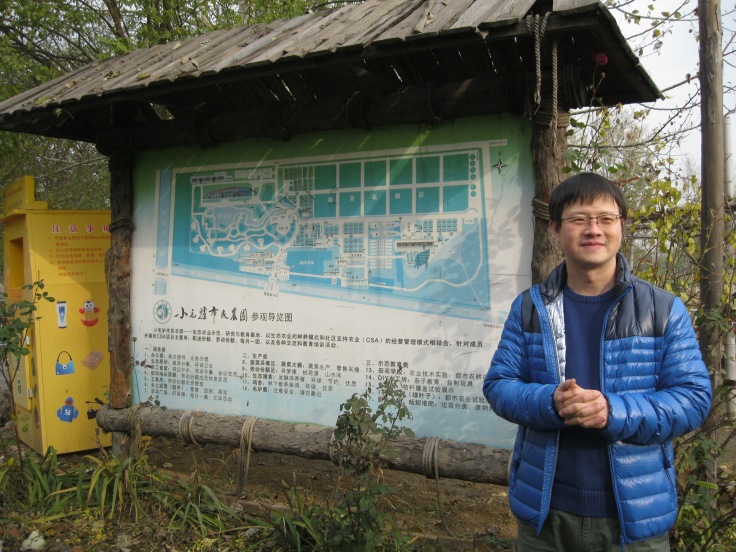 The Manager of Little Donkey Farm with a map of the farm fields and rented garden plots.
The Manager of Little Donkey Farm with a map of the farm fields and rented garden plots.
The farm gives members the choice of growing their own food on rented 30 square meter plots or purchasing a share of the harvest grown by the team of “new farmers” and peasant farmers from the village. The renters pay 1800yuan/year and agree not to bring in chemical fertilizers or pesticides and to use seed and starts provided by the farm. The one little donkey is still alive and well. Besides vegetables, the farm raises chickens and pigs, feeding them left over vegetables and some corn. They use an intriguing system of beneficial microorganisms that I hope to learn more about, spraying the hay in the pigpens with a mixture from a traditional recipe that includes cinnamon and local ingredients. The microorganisms keep the compost from smelling bad and speed up decomposition.
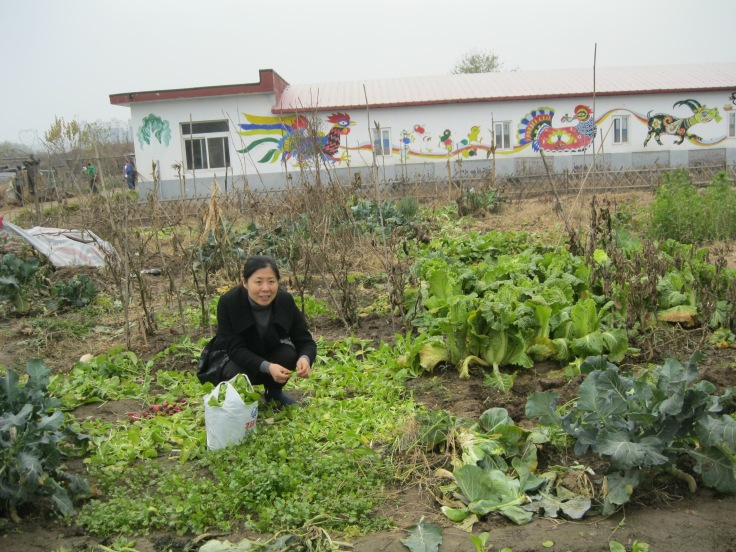 A member harvests her own vegetables.
A member harvests her own vegetables.
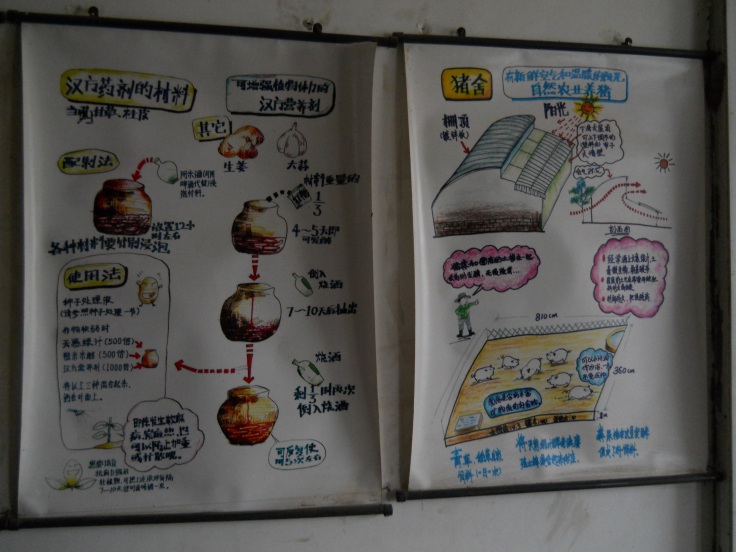 A series of charts explains the Little Donkey system for producing its own fertility following a system borrowed from Korean Natural Farming.
A series of charts explains the Little Donkey system for producing its own fertility following a system borrowed from Korean Natural Farming.
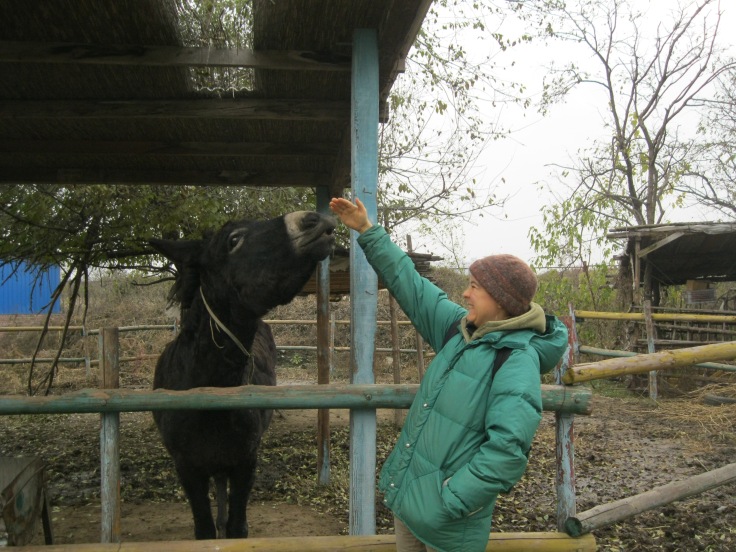 Erin Bullock greets the Little Donkey.
Erin Bullock greets the Little Donkey.
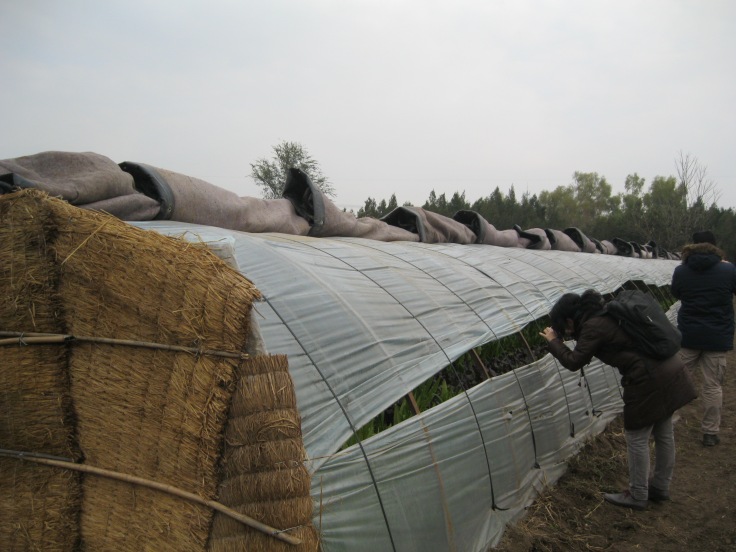
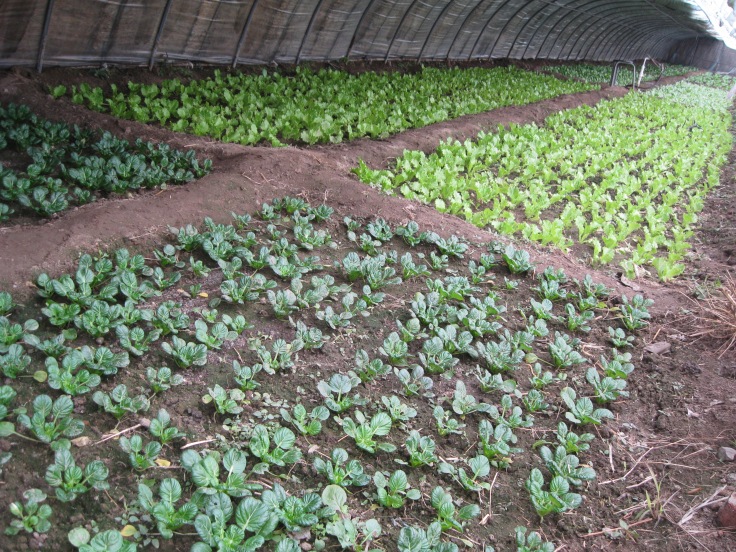
Our next stop was the Phoenix Cooperative, one of 3 Biodynamic farms in China. This farm has 16 workers and many very small fields, 13 hectares in all, on the hilly land of foothills that rise to magnificent mountains beyond of a national park. Phoenix has 200 members, grows vegetables for 40 shares and rents 30 square meter plots for 2600 y/year. The farm is a 7-year old not-for-profit and was able to balance its budget for the first time two years ago. All of the work of growing soy beans and root crops appears to be by hand. We observed people digging nam, a traditional root crop that looks a lot like burdock and is as deep growing but tastes more like potato. They told us they sell most of their nam to visiting Germans. They are starting a farm school to teach a combination of traditional Chinese wisdom and Steiner. The farm also has a good sized vegetarian restaurant.
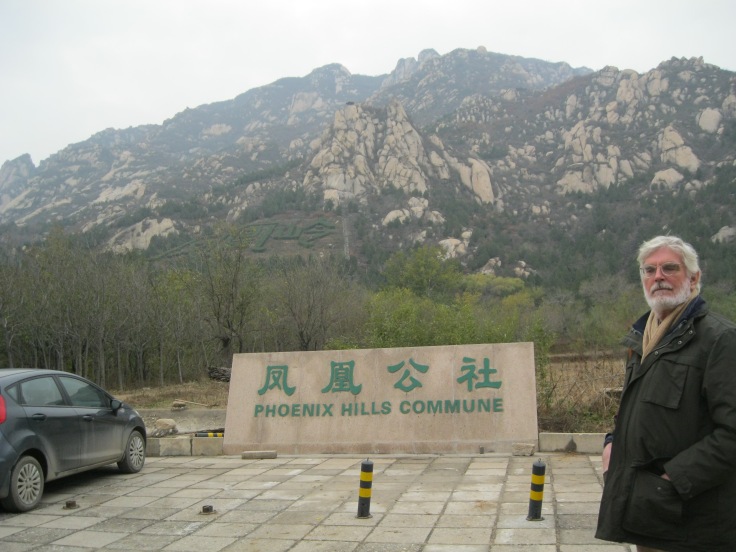
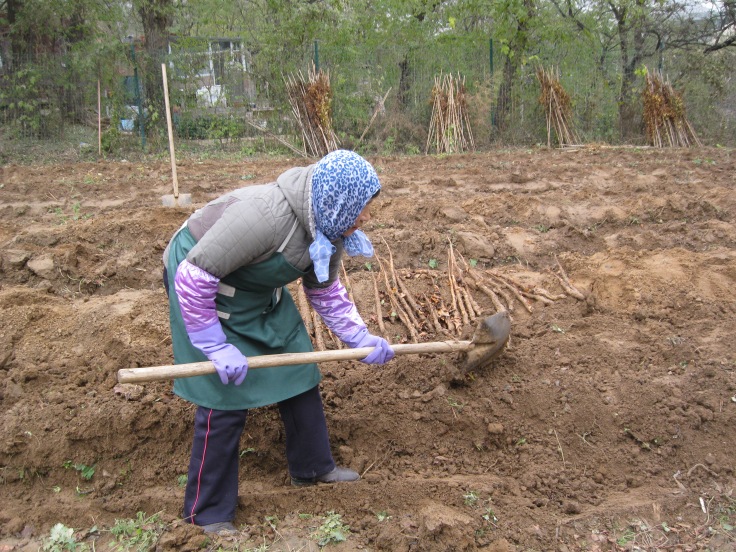
Wali Museum, a Memorial to Traditional Peasant Life
To construct the Olympic stadium in 2008, the Chinese government
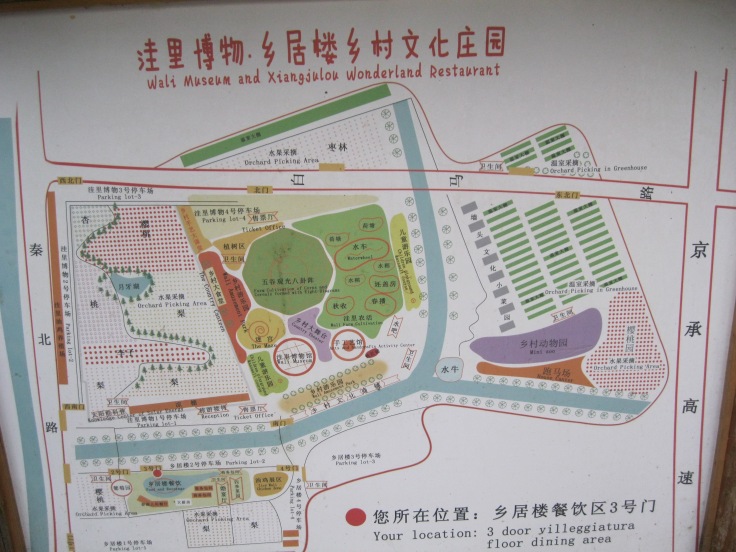
destroyed a 500 year old village and forced it to move. Rather than disperse, the villagers created the Wali Museum as a demonstration of rural life. It is very popular with the Beijing public, attracting many tours for school children. There is a large playground area with rural themes – large toy earth moving equipment at sand boxes (my grandson would love it!) and a petting zoo with a full range of domestic farm animals in cages. A large rotunda houses a display of hundreds of handicrafts. The early night of November was falling as we toured the museum which tells the story of the village. On display are many broken and dusty implements, dishes, piles of seed, with fading photos of village people. I was relieved to reach a room with a brighter display of traditional villages in China that have survived. The dusty exhibits in the dark and dusty air made me sad – an elegy to China’s past.
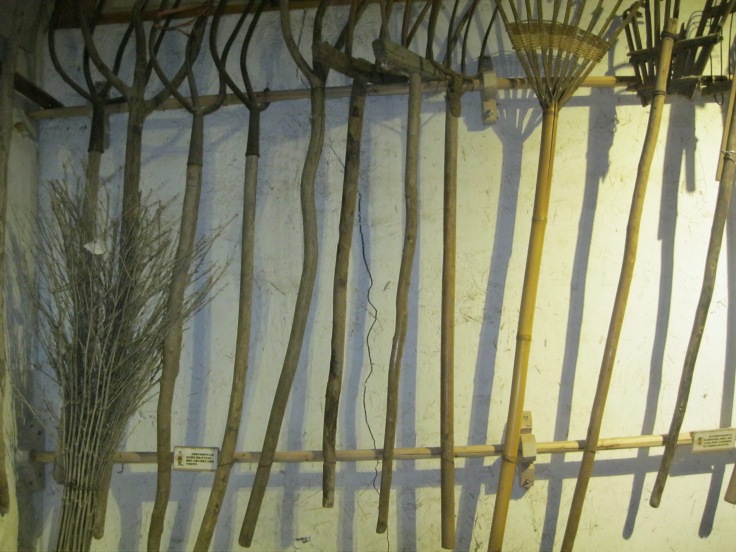
We ended this long day of farm tours with a stop at a variety store where we could buy food or almost anything else. I settled for a big bottle of filtered water.
Wednesday –Cooperative Farms
The Green Farmer Coop was founded in 2007. The CEO invested money in this project and 345 families put in the 150 hectares of land that they have the right to use. The coop rents the land with a 30 year lease and produces 50 varieties of vegetables. Our translator, Yu-ik Kim, from S. Korea, explained that until recently, farmers could not lease land to others. In the past 20 years, the government has made it easier to transfer use of land, with some good and bad results. For 15 years, China has been exporting food while in the 1950’s and 60’s, there was famine due to poor land management.
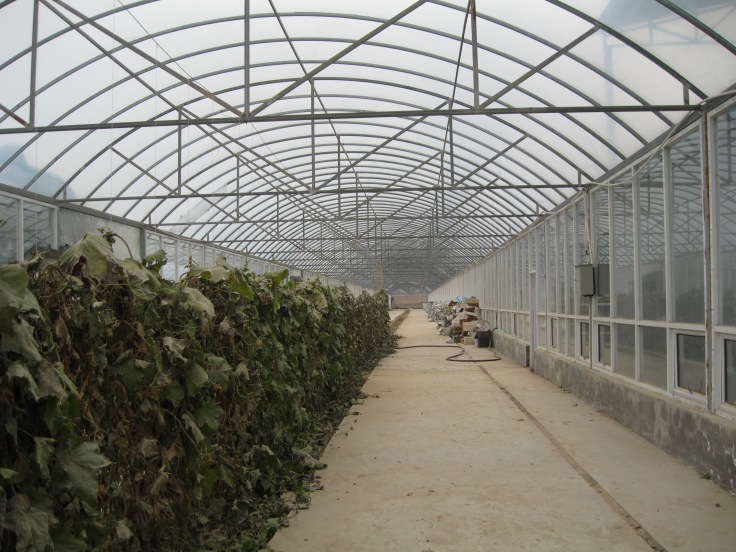
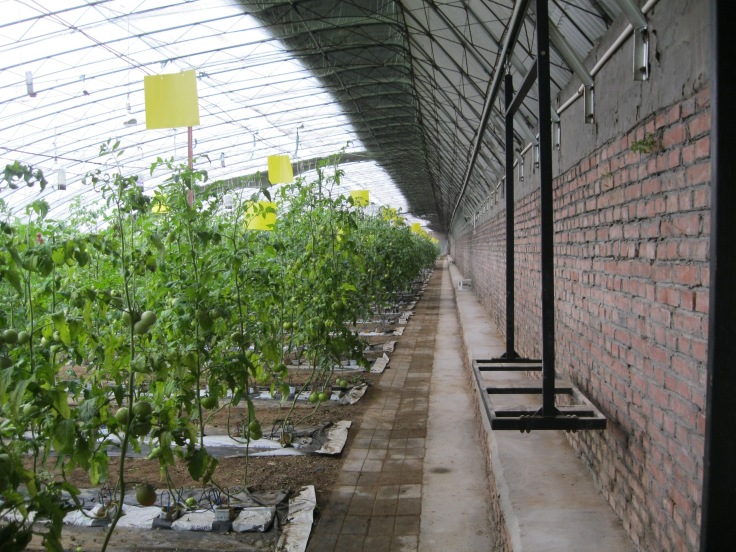
At the Green Farmer Coop, families also have separate plots and market jointly with the big project which sells to schools and other institutions. 60 – 70 people work at the coop earning 3000 – 4000 yuan a month. We visited their new hydroponic greenhouses where they use Dutch technology. The plants are rooted in bags containing a medium watered by liquid fertilizer. No pesticides are used. We entered through a complex of long, wide glass houses – with only one row of cucumbers down the center. The use of space was puzzling to me. Attached to the central house are rows of 200 foot by 40 foot greenhouses like those at Little Donkey and Shared Harvest Farms. The north wall is solid cement block and brick with one layer of plastic glazing over metal hoops that arch towards the south. A thick quilted cover rolls down at night to cover the glazing with a central mechanism that allows one person to raise and lower the covers. They add no heat except for that produced by heat lamps in the tomato and eggplant houses. The tomatoes we saw had been planted 4 months earlier. Cloudy weather was delaying the harvest. I noticed yellow and gray spots on the leaves from some kind of fungal infection. Hanging bags of some substance help control humidity and yellow sticky traps collect insects. Boxes with bees were placed in the houses for pollination. We were told that they use imported bees from Holland because the local bees “aren’t hard workers!”
Shared Harvest Farm
The village of Liu Zhuang Hu has 170 families for a total population of 450. Unlike the reconstruction at the village where Little Donkey is located where 5-story high rises are replacing traditional housing, reconstruction in Liu Zhuang Hu follows traditional village styles; homes are single story with a central courtyard. The streets are well paved and clean. There is a newly constructed community bath house and a very attractive park with play areas for children, exercise equipment for elders and even a petting zoo with cages for ostriches, domestic foul and an assortment of deer and rabbits. The Party Secretary, Mr. Yo, heads up the village committee for rural reconstruction that has guided investments for ten years. He is supportive of Shared Harvest farm and is also developing eco-tourism. The village has constructed homestay accommodations, attractive rooms with electric heating and on-demand hot water. The local government has invested in a methane digester newly constructed at the farm that is already producing gas for the communal cook stove. The farm hopes to have the funds next year to invest in equipment to use this gas for heating as well.
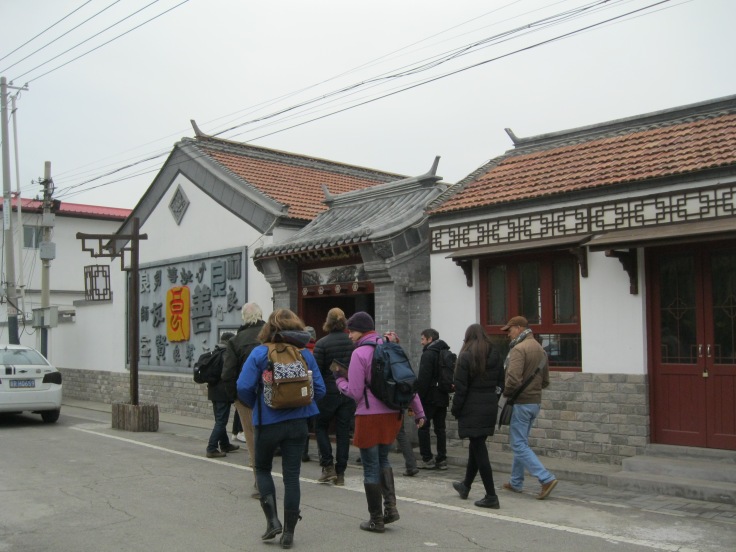
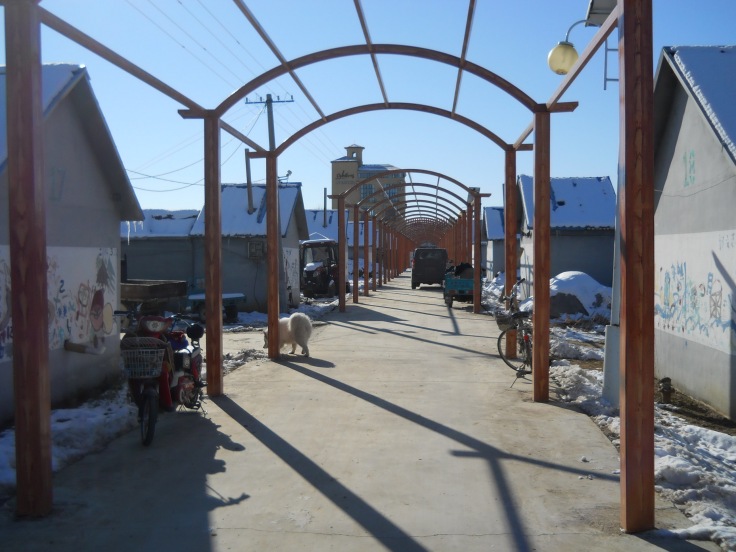
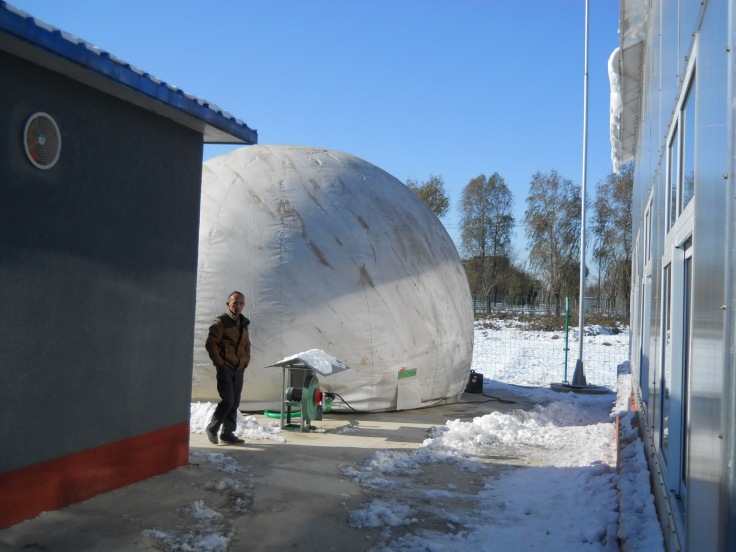
Shared Harvest has been at this new location for 2 years while continuing production at the original site. Shi Yan, the head farmer and founder of Little Donkey, rented the 40 mu (one mu equals 0.1647 acres) with 30 greenhouses and a large building with kitchen, cafeteria and offices for 15 years for 150,000 yuan/year (around $23,000 at the current exchange rate of 6.57 yuan to the dollar). The farm grows 50 crops in the field and in the greenhouses that produce throughout the winter. Combining both sites, they use 80 mu (13.18 acres); of which half are in the village we visited. As at Little Donkey, there are two groups of farmers – 15 “old farmers,” peasants who live in the village and are over 50, and 20 “new farmers”, recent college graduates who are housed in the village and share a somewhat Spartan existence, eating meals together in the farm dining area.
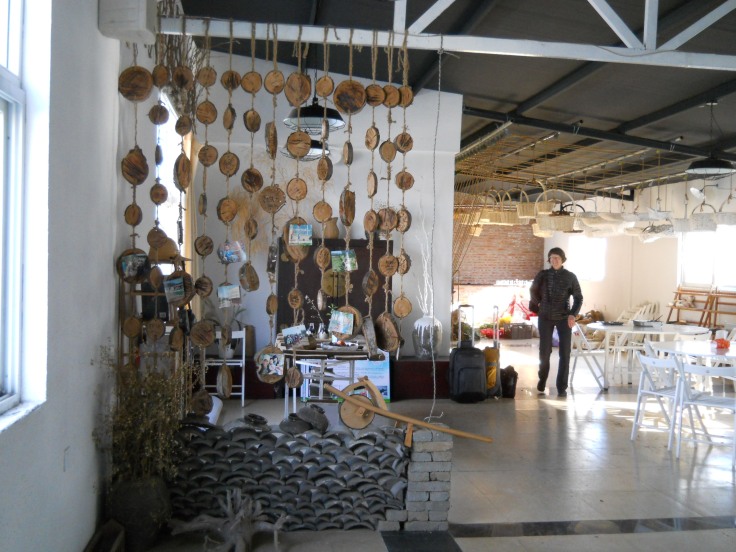
Shared Harvest provides 600 members with 50 weeks of produce (85% of production), as well as selling to a buying club made up of 6 groups with weekly deliveries to schools (10%), and a farmers’ market (5%). The farm harvests and delivers daily to the 600 subscribers with village farmers paid to do the deliveries. They are shifting to a new system with a professional delivery service. Average production is 10,000 kilos a month. When members asked for rice, the farm selected a farm they trust in a rice producing area in Hunan Province, and buys 9 hectares worth of rice. The Shared Harvest crew repacks the rice into 1-kilo packets. Communications between Shared Harvest and members are electronic. Cheng, Shi Yan’s husband and former field
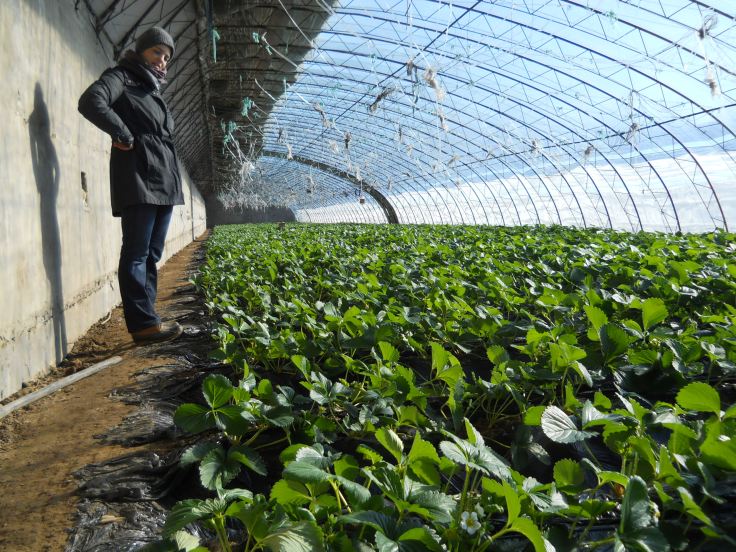
manager, has developed an app that allows customers to establish an account and select what they want each week from the list of available produce, including rice, vegetables, eggs, chicken, pork and mushrooms. The leader of their mushroom production is a young man who showed up and asked for a job. Shi Yan had no openings so she challenged him to start his own enterprise. He chose mushrooms and has developed his own style, using crushed corn stalks mixed with wheat chaff as the medium. He is now one of the few organic mushroom producers in China. Except for a few varieties they save (beans, onions, some leafy greens), Shared Harvest purchases most of the seed they use from conventional Chinese seed companies. Shi Yan told us there is no organic seed producer in China.
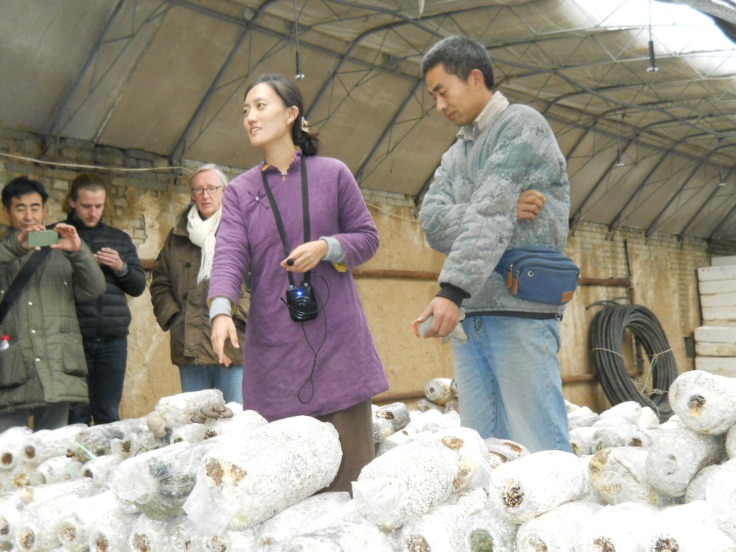
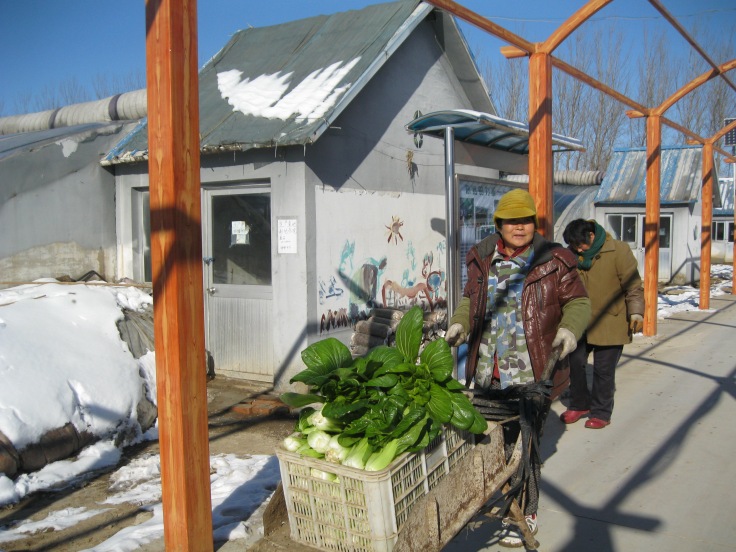
They offer two share sizes – for 8000 or 3000 yuan. The price per kilo is slightly lower for the larger shares. Shi Yan explained that their price is twice conventional but 2/3 the supermarket price for organic produce. Consumers want to buy direct and know their farmers. Trust is a major issue. When surveyed, their top reasons for joining are health and the desire to support young organic farmers. Taste and environmental benefits are high on their list too. The farm pays its workers a little more than conventional farms. The old farmers earn 3000 yuan a month and work 8 hours a day. The new farmers get more – 5000 yuan, but seem to be on call around the clock. Some of them helped with the two conferences, so hours were probably extra crazy.
Uncle Ma – Their Link with the Farmers of 40 Centuries
A highly skilled and experienced man – Ma Jinzhong, whom they all call Uncle Ma – directs the greenhouse operation. He looks energetic and healthy, though he chain smokes and told me he is 60 years old. He worked in conventional greenhouses for 18 years and grew up on a farm. His approach is to avoid the need for pesticides by carefully manipulating heat, air flow and moisture in the greenhouses. (I spent an hour helping a young man pick caterpillars from the broccoli and cauliflowers – we filled a quart jar and he fed them to the chickens.) We had the chance to compare the eggplants and tomatoes under his charge with those grown in the hydroponic greenhouses. Despite the exceptional cold spell and long stretch of sunless weather, Uncle Ma’s plants look radiant and healthy while the leaves and stems of the hydroponic eggplants and tomatoes showed fungal diseases. Shared Harvest uses 5 tons of composted manure and purchased bio-fertilizer per mu.
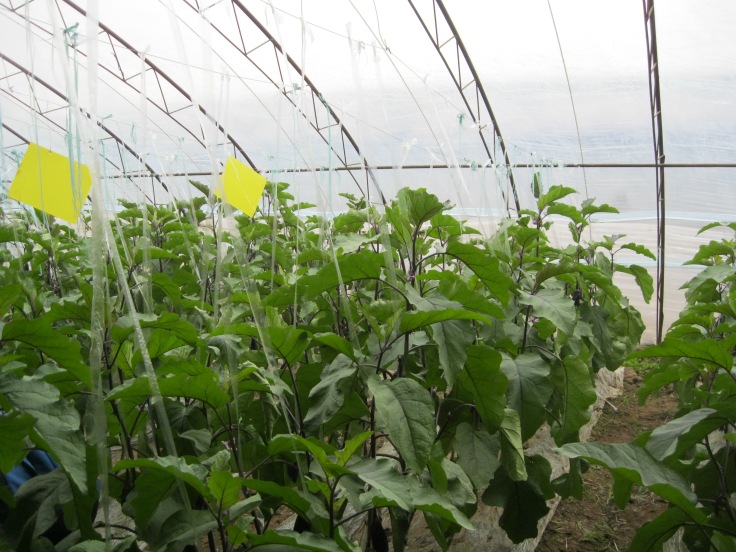
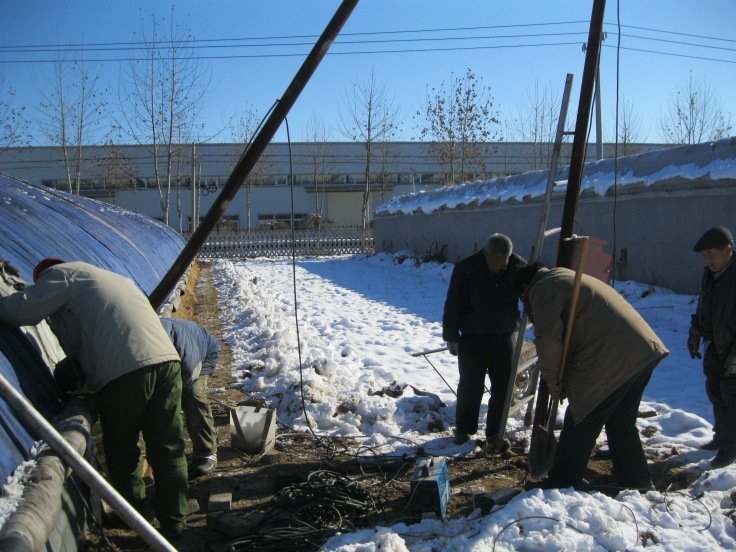
One afternoon, we were able to interview Uncle Ma. He grew up in a village and was Party Secretary for 20 years. In their gardens, his family used manures, including night soil. He started working in agriculture in 1985 in Shandung Province with big greenhouses. The construction there is better, he explained, the solid wall goes into the ground 1 meter which preserves more heat. The 6 meter tall walls reduce humidity problems and air exchange is better. They are also twice as wide. The Shared Harvest greenhouses are 60s technology. (According to Shi Yan’s research, in 2012 there were 830,000 acres of greenhouses like those at Shared Harvest and 1,680,000 acres of plastic hoophouses.) Uncle Ma deals with pests through prevention – managing humidity and temperature. Each crop is different – he checks all daily. Tomatoes, eggplants need high fertility –he adds chicken manure and guano. They rotate the crops. He grafts cucumbers onto pumpkin vines – if you want you can continue production up to 10 years. Grafting also prevents pests. He would like to visit US farms. In his view, organic is an important direction for development – healthy. What Shared Harvest grows now – peasants can’t afford. Labor is intensive and delivery is a big expense requiring a lot of labor. They always lose some crop to disease and pests – 10% at Shared Harvest, but it is a complex operation and just starting up. He thinks peasants should grow their own food and teach the next generation. His generation knows how to grow. Now you can come to a village and rent as Shi Yan did. Parent opposition – it’s a process, slow to fast. You have to start somewhere. He has two sons – one works in a research office and the other in high tech agriculture. He claims “no public harm” and is skeptical of dad’s work –the yields are too low. I ask if he has assistants who he is training. His answer is yes and one has started his own farm. Uncle Ma counts on the team to do communications while he does the farming.
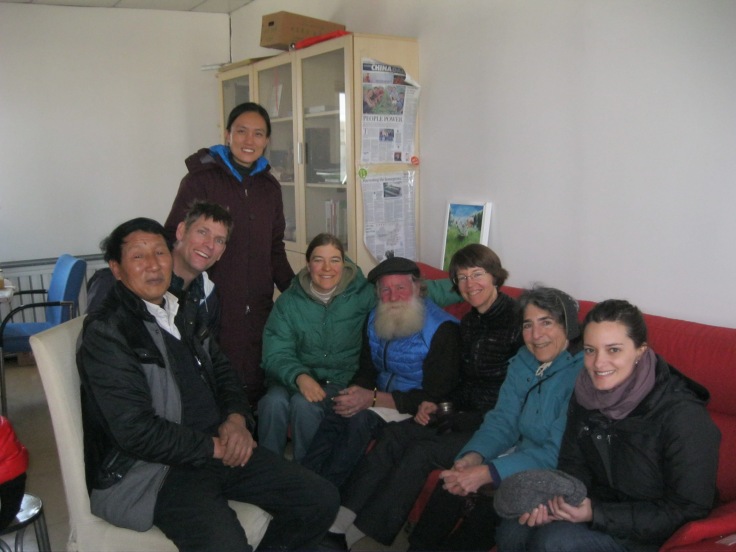
Shi Yan explains why they do so much packaging with a lot of plastic wrap. Last summer, members complained during the hot weather, so they started using plastic. I ask about her own health – she did Tai Chi and would like to do more. Works 8 – 10 hours a day.
In addition to heading up Shared Harvest, Shi Yan is putting a lot of energy into forming a national CSA Coalition. China does not allow civic organizations on the national level so the coalition must register in Beijing. And then people from other areas can join. At the CSA conference, the CSA farmers voted to form the coalition and agreed to put in money to hire staff – 2000 yuan per CSA. Shi Yan also serves as Vice President of Urgenci and gives frequent public talks and press interviews to spread the word about CSA and solidarity economics.
Tian An Coop
Started in 2003, the Tian An Cooperative markets, packages and delivers fruit and vegetables from 370 small farms selling through 5 channels – wholesale, to schools, to individuals, to 12 supermarkets and to companies. The coop provides orders to the farms, as well as seeds, seedlings, pesticides and fertilizers, technical assistance and disease analysis. The coop allows the farmers to pay back production loans with harvest. A contract details quality standards, including use of pesticides. The incentive to belong is the better price. The coop is able to charge more than the usual conventional price because it provides high quality home deliveries and sorts out all waste. We visited the coop store where they sell produce, store inputs for farmer members, and sell seeds as well as value added products from the member farms.
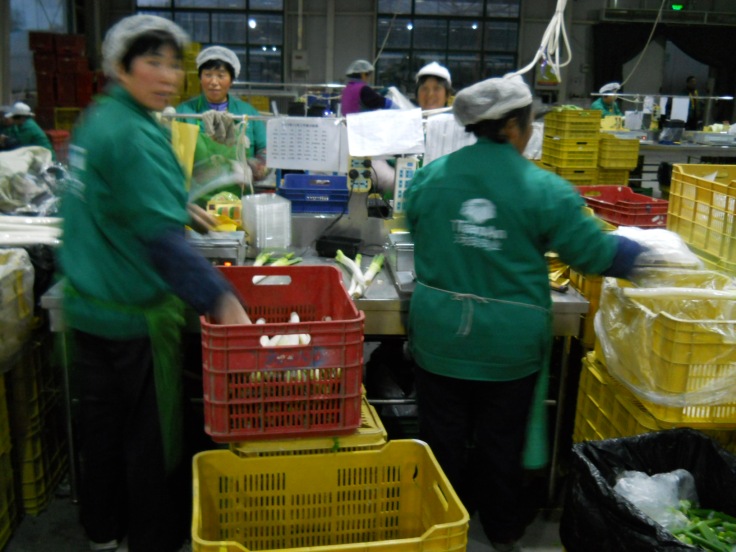
The final coop we visited specializes in decorative gourds. This is a traditional Chinese craft that the artists of this coop have taken to a fine art. We had a quick look at their amazing collection and then a demonstration of the etching technique they use.
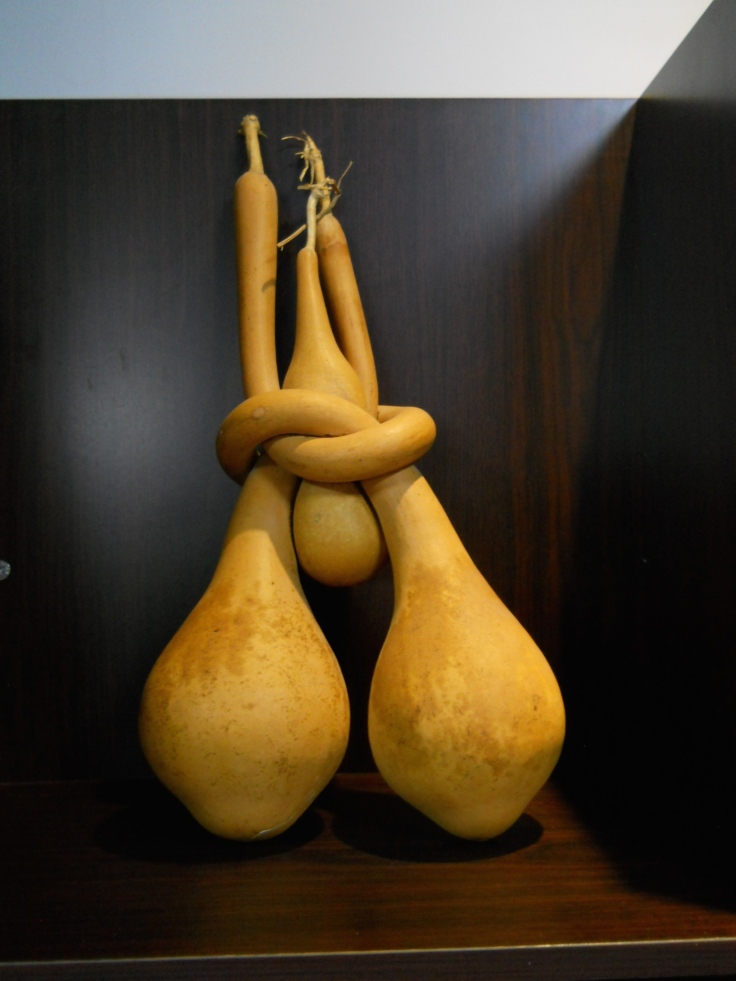
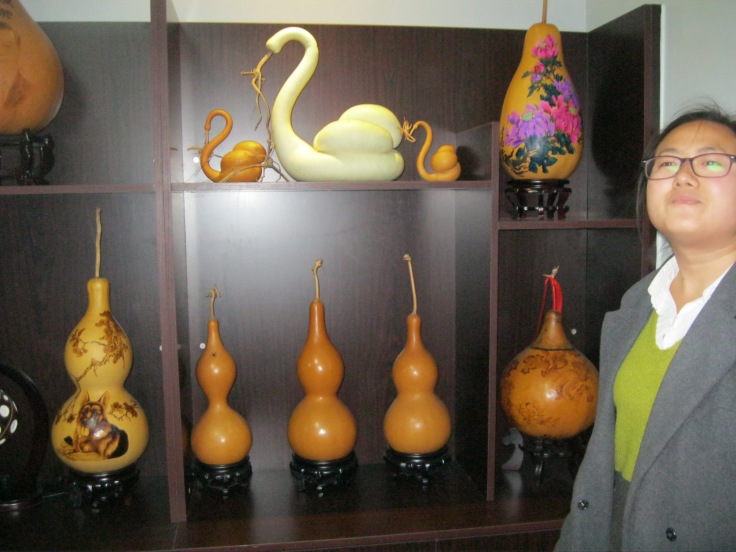
This marks the end of Part 1. To be continued…

